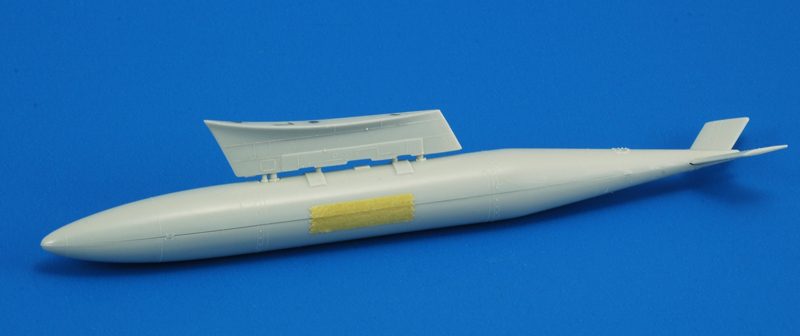
| I made an interesting discovery regarding the inboard 450 gallon tank. Monogram designed it such that there is a 1 mm gap all along the pylon attachment (as shown in this photo). However, I noted that these tanks in reality mounted with a decreasing gap towards the rear, creating a more nose-down attitude. This is caused by a spacer installed in the forward sway brace, as indicated clearly by stencils on the pylon. Therefore the rear sway brace is flush with the pylon's lower surface, whereas the forward sway brace sticks out by roughly its own thickness. But only when the finned 450 gallon tank is fitted. | 
|
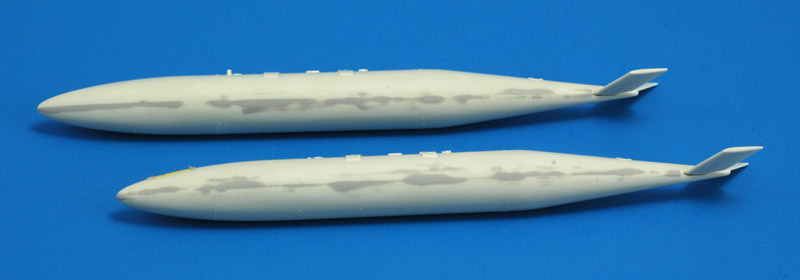
| The Monogram tanks were quite unround, not only near the glue joint but also on the bottom side. I used quite a bit of Mr Surfacer (both from a jar and a spray can) to build up the missing material. A Flexifile is indispensable for a task like this. Magnets were installed at a scale 30" distance, similar to the lug distance on the real thing. Generally speaking, I did not build the stores to the highest degree of perfection, since it would be more of a play model than a static model for detail viewing. |
| At a late stage it occurred to me that I could create the additional nose down effect of these tanks by gluing two 1 mm magnets side-by-side on the forward magnet of the tank. | 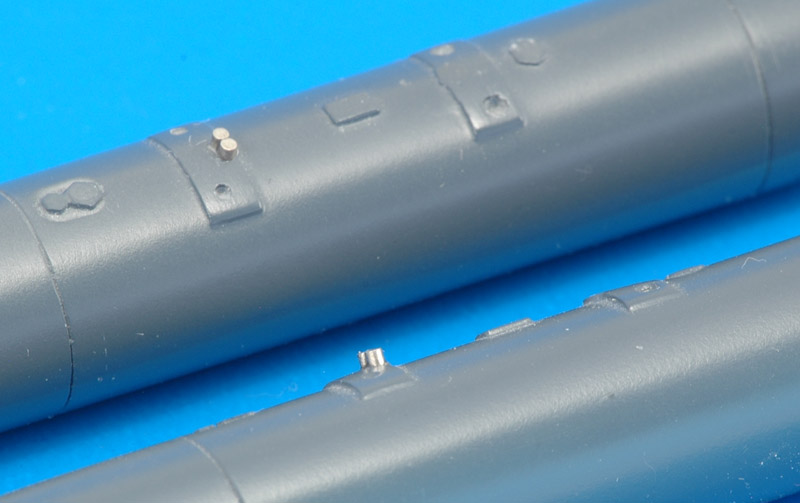
|
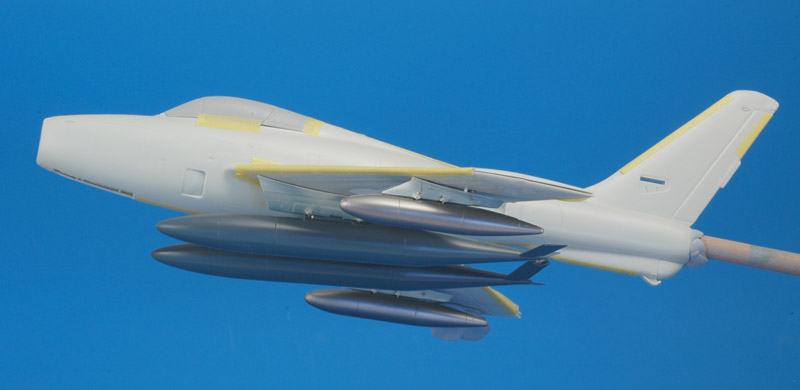
| The extra magnets created about 3.5 degrees nose-down attitude, and I saw immediately how much better this looked, so much more Streak-like. Maybe I overshot the mark a bit, but this is definitely a recommended modification for any F-84F model. Note that the outboard pylons have been modified too, they originally gave the outboard stores way too much nose-down attitude (see the F-84F model section). |
| I had always thought that the Voodoo tanks bore a striking similarity with the Type II tanks that the Dutch Streaks used. The 'Flight Handbook F-84F-25 and later aircraft' says on page 163 (PDF page 200) that they were built by 'Royal Heater'. Dutch Decals calls them 'war tanks' suggesting they are simplified tanks. I made a photo analysis to establish the length. I measured the fuselage length and the average length of the two tanks, and calculated a length of 49.0% of the fuselage length. The Monogram fuselage measures 242 mm, making the tanks 119 mm in 1/48 scale.
In the thread RF-101C auxiliary tanks on Britmodeller, 225" x 35" and 273" x 27" are reported for the two types of tanks, or 119 x 18.5 and 144 x 14.3 mm in 1/48 scale. The former number match my tanks well, except the 35" diameter figure. Instead of 18.5 mm it measures 15.7 mm, the equivalent of 30". The kit tanks look OK to me, so I'm tempted to doubt the 35" figure. | 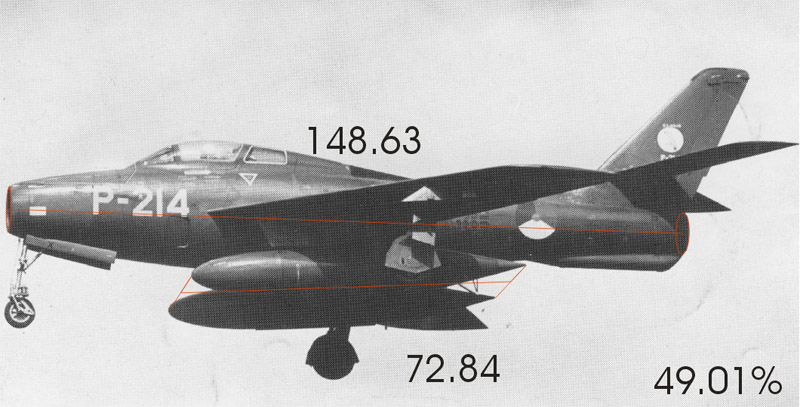
|

| Club member Benno kindly donated his 1/48 scale Voodoo tanks from both the Kitty Hawk kit (front) and Monogram kit (back) for my project. They have a slightly different shape. I picked the Monogram Voodoo tanks randomly from the two options, and they were 118 mm long, very close to the number calculated above.
I haven't seen them in the flesh, but I think the AMS Resin RF-84 F-84F Thunderstreak Corrected Tanks are similar to the Voodoo tanks. |
| The tanks were nice and round, but had surface irregularities in six places, where the ejector pins had pushed the part out of the mold. Magnets were again installed at a scale 30" distance. Contrary to the long 450 gallon tanks, the gap between the tank and pylon is constant. I tried to achieve a similar fit to the kit pylon. | 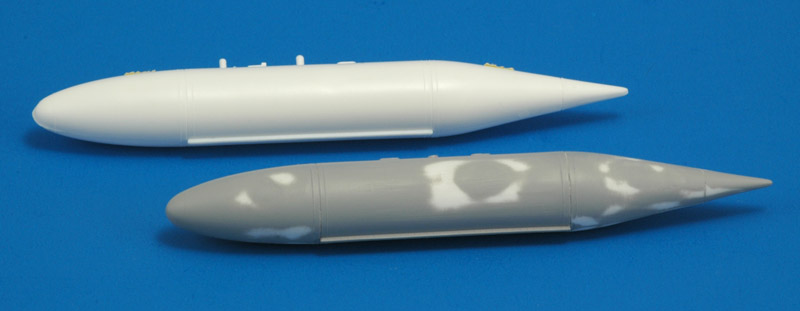
|
| The inboard 230 gallon fuel tank were a mystery - no drawing showed them and neither could I find the dimensions. Another photo analysis was called for. I calculated a length (excluding fins) of 46.4 percent of the fuselage length, making 112 mm in 1/48 scale. I also measured that the pylon's leading edge meets the tank at 24 mm from the tank's nose. | 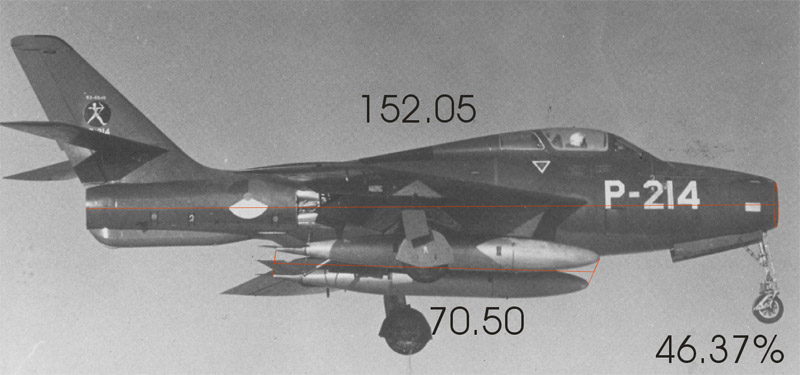
|

| It looked like combining the front 3/4 of the Monogram 230 gallon outboard tank with the conical tail section (with fins) of the 450 gallon inboard tanks would do the trick. From another photo (Airdoc p65) I concluded the fin span is the same for the 230 gallon and 450 gallon tanks. I cast resin copies of the tail of the Monogram 450 gallon tank, with the forward section cut off to achieve matching diameter. The fins kept breaking off during demolding, but I solved it by inserting a piece of fabric cut from a cheap cotton bag. The assembly is too long now, 117 mm. |
| I scribed a new panel line 34 mm behind the nose, and sanded the nose section to a much more streamlined shape. Next I removed the sway brace plates, and created new ones, positioned such that the pylon's leading edge was 24 mm behind the nose. Magnets were fitted in 2 mm holes at a scale 30 inch distance. Behind the rear sway brace plate I removed 5 mm length from the tank. I then glued the resin tail section on. This was followed by lots of sanding to smooth out all the modifications. Lastly I added a panel line 70 mm behind the nose. I think the tank is now 90% accurate, which is good enough for this project. | 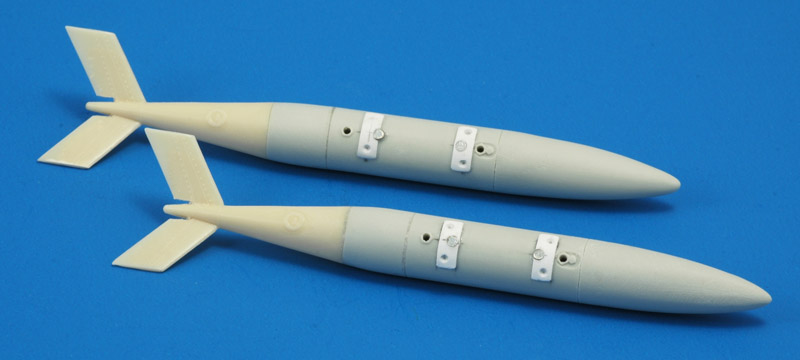
|
| I made a false start with the outboard 230 gallon fuel tanks by assembling them and installing magnets. They looked awfully long on their pylons. Monogram molded the parts such that a substantial gap exists between the tanks and pylon, but I did not see that in photos of the real thing. Therefore I removed most of the pins sticking out of the tank, plus I increased the depth of the mounting holes for the sway braces so they could be installed flush, creating the fit as seen in this photo. | 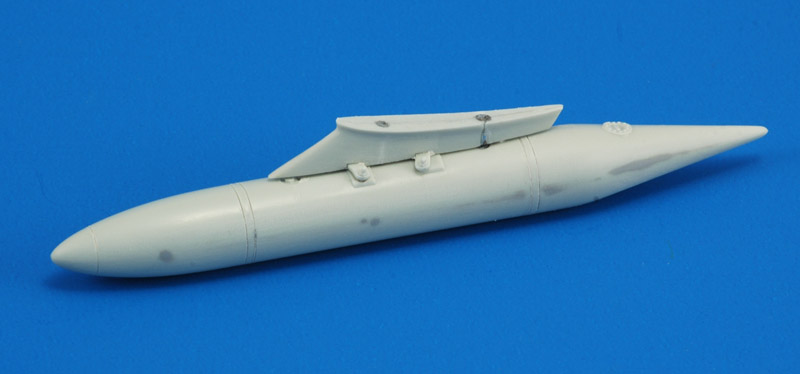
|
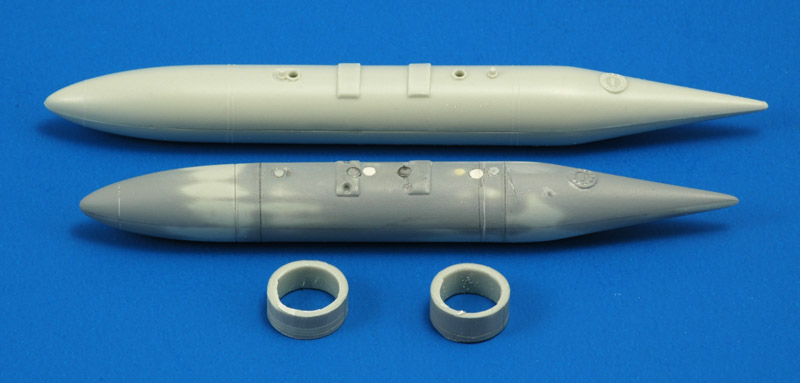
| Based on Monogram 1/48 F-102 measurements I decided on 95 mm long tanks. I removed a 5 mm section from the front side of the cylindrical section, and moved the panel line forward roughly 5 mm too. In the rear side of the cylindrical section I removed 5 mm. Quite likely the rear cone should be blunter, but I stopped here, lacking solid data.
The 'Flight Handbook F-84F-25 and later aircraft' mentions the following variants of the outboard pylon tanks: Type I (Republic 00500), Type II (Sutton) and Type IV (Royal Jet). The last one was made of glass fiber and had some restrictions for flying in lightning conditions. |
| Later, Frank Bell of the Bentwaters Cold War Museum was so kind to measure a glassfiber tank (Type IV) tank that they plan to hang under their F-84F under restoration. It shows that the kit tank has a slightly smaller diameter, 11.8 instead of 12.3 mm, and my guesstimated length of 95 mm was 1 mm too much. In the drawing my modified kit tank is drawn in red. | 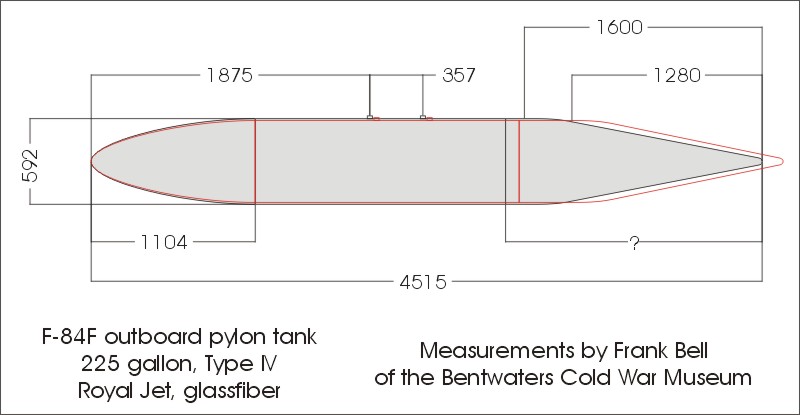
|
| Most tanks seen in color photos had a PRU Blue bottom side and an Extra Dark Sea Grey top side. I also saw a few tanks with Dark Green top sides, or completely painted PRU Blue, but I decided to paint all my tanks the same. The tanks were first painted MRP-120 PRU Blue, then masked them using a 2.5 mm rubber cord to create a soft edge, attached with Blu Tack. The top halves were then painted MRP-114 Extra Dark Sea Grey. It resulted in a straight division with a nice soft edge.
Here's the result with all the fuel tanks lined up. I installed magnets on the bottom side of each store too, and installed corresponding magnets in a sheet of plastic card. Note that all tanks lack the suspension lugs, since otherwise they wouldn't fit under the pylons. I might build separate lugs with magnets installed, for display purposes. | 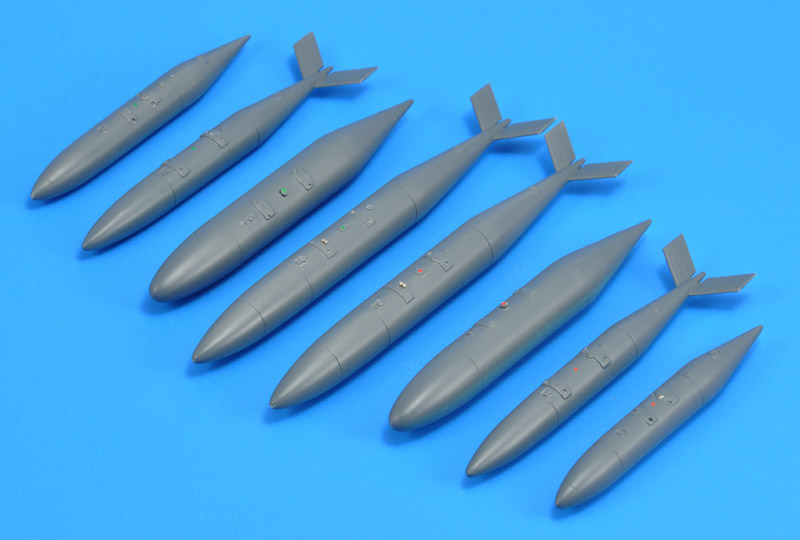
|